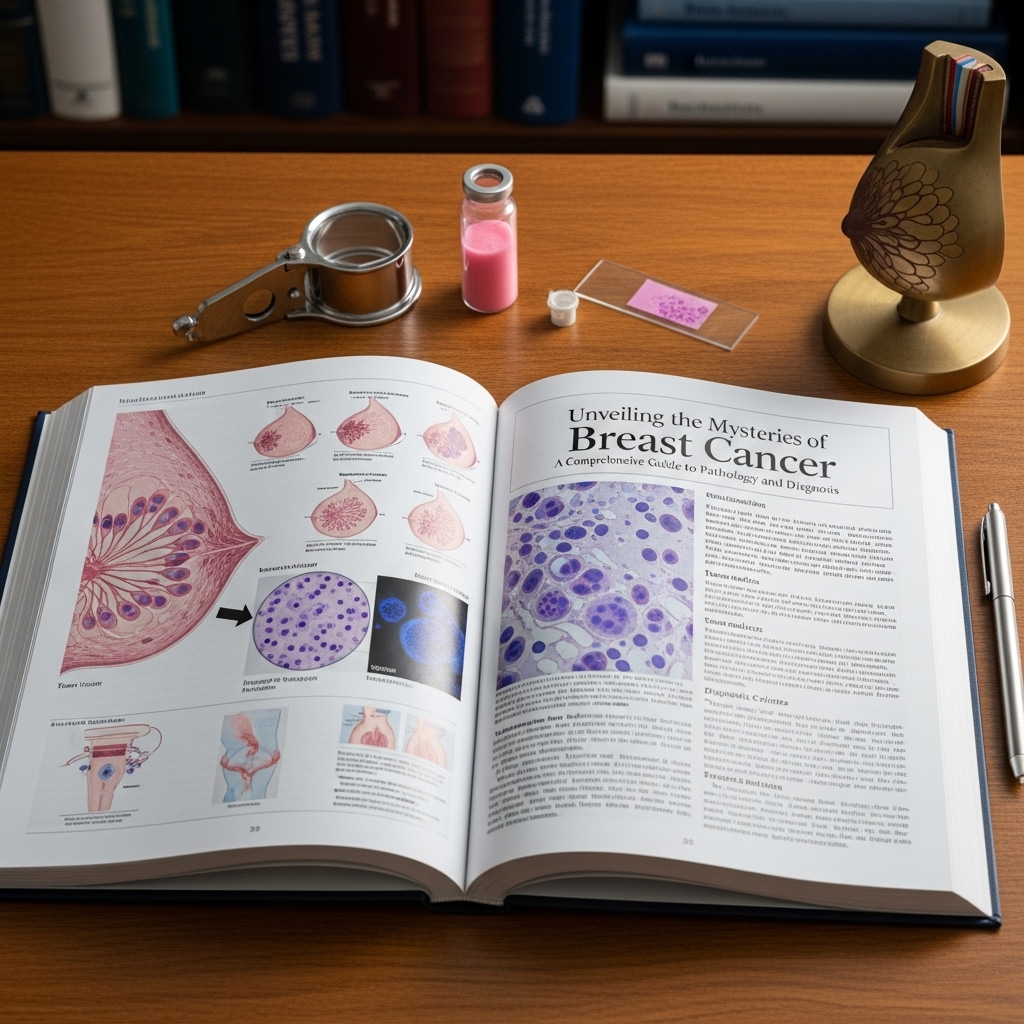
Introduction to Breast Cancer Pathology
Breast cancer is a complex and multifaceted disease that affects millions of women worldwide. The diagnosis and treatment of breast cancer require a comprehensive understanding of its pathology, which involves the study of the disease's causes, development, and progression. Breast pathology is a specialized field of medicine that focuses on the examination of breast tissue to diagnose and characterize breast diseases, including cancer. In this article, we will delve into the mysteries of breast cancer, exploring its pathology, diagnosis, and the various factors that influence its development and treatment.
Understanding Breast Cancer Biology
Breast cancer arises from the uncontrolled growth of abnormal cells in the breast tissue. These cells can develop in the ducts, lobules, or connective tissue of the breast. The most common types of breast cancer are ductal carcinoma, which originates in the milk ducts, and lobular carcinoma, which originates in the lobules. Breast cancer can also be classified into several subtypes based on the presence or absence of certain proteins, such as estrogen receptors, progesterone receptors, and HER2. Understanding the biology of breast cancer is crucial for developing effective treatment strategies and improving patient outcomes.
For example, breast cancers that are positive for estrogen receptors are more likely to respond to hormone therapy, while those that are HER2-positive may benefit from targeted therapies. On the other hand, triple-negative breast cancers, which lack estrogen receptors, progesterone receptors, and HER2, tend to be more aggressive and require more intensive treatment approaches.
Diagnostic Techniques in Breast Pathology
The diagnosis of breast cancer typically involves a combination of imaging studies, biopsy, and laboratory tests. Mammography, ultrasound, and magnetic resonance imaging (MRI) are commonly used to visualize the breast tissue and detect any abnormalities. If a suspicious lesion is identified, a biopsy is performed to collect a sample of tissue for examination under a microscope. There are several types of biopsies, including fine-needle aspiration, core needle biopsy, and surgical biopsy.
Immunohistochemistry (IHC) and molecular testing are also essential tools in breast pathology. IHC involves the use of antibodies to detect specific proteins in breast cancer cells, while molecular testing, such as next-generation sequencing, can identify genetic mutations that drive cancer growth. These tests help guide treatment decisions and predict patient outcomes.
The Role of Genetic Mutations in Breast Cancer
Genetic mutations play a significant role in the development and progression of breast cancer. Certain mutations, such as BRCA1 and BRCA2, increase the risk of breast cancer, while others, such as PIK3CA and TP53, are associated with specific subtypes of breast cancer. Genetic testing can identify individuals who are at high risk of developing breast cancer, allowing for early intervention and prevention strategies.
For instance, women with a BRCA1 or BRCA2 mutation may opt for prophylactic mastectomy or enhanced screening to reduce their risk of developing breast cancer. Additionally, genetic testing can inform treatment decisions, as certain mutations may be associated with resistance to specific therapies.
Staging and Grading of Breast Cancer
Once a breast cancer diagnosis is made, the cancer is staged and graded to determine its extent and aggressiveness. The TNM staging system is commonly used, which takes into account the size of the tumor (T), the presence of lymph node involvement (N), and the presence of distant metastasis (M). The grade of the cancer is also determined, which reflects the degree of abnormality of the cancer cells.
The stage and grade of breast cancer are critical in determining treatment options and predicting patient outcomes. For example, early-stage breast cancers may be treated with surgery and radiation therapy, while advanced-stage cancers may require more intensive chemotherapy and targeted therapies.
Treatment Options for Breast Cancer
The treatment of breast cancer depends on several factors, including the stage, grade, and subtype of the cancer, as well as the patient's overall health and preferences. Surgery, radiation therapy, chemotherapy, hormone therapy, and targeted therapy are common treatment modalities used alone or in combination. Neoadjuvant therapy, which involves treating the cancer before surgery, is also an option for certain patients.
For example, patients with HER2-positive breast cancer may receive trastuzumab, a targeted therapy that targets the HER2 protein. Similarly, patients with hormone receptor-positive breast cancer may receive tamoxifen or aromatase inhibitors to block the growth-promoting effects of estrogen.
Conclusion and Future Directions
In conclusion, breast cancer is a complex and multifaceted disease that requires a comprehensive understanding of its pathology and diagnosis. By exploring the biology of breast cancer, diagnostic techniques, genetic mutations, staging and grading, and treatment options, we can improve our ability to detect and treat this disease. As research continues to advance, we can expect to see new and innovative approaches to breast cancer diagnosis and treatment, including liquid biopsies, artificial intelligence, and immunotherapy.
Ultimately, the goal of breast pathology is to provide accurate and timely diagnoses, guide effective treatment decisions, and improve patient outcomes. By working together, clinicians, researchers, and patients can uncover the mysteries of breast cancer and develop more effective strategies for prevention, diagnosis, and treatment.
